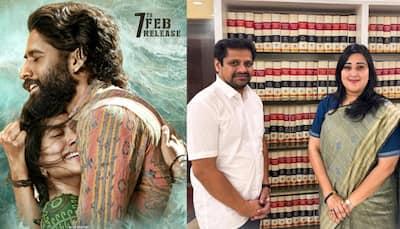
There are many words that evoke fear with immediate effect—wife, national budget, Insta influencers, electronic music, yatras, and EVMs instantly come to mind. But for Mumbaikars, the word that we fear the most is monsoon.
Strangely, in my younger days (which may or may not be pre-partition), the fear of monsoon was unheard of. Of course, that was when our city was called Bombay. With renaming it to Mumbai, came the monsoon fear. Please, I’m not correlating these two events, I’m just saying… Coming back to the present day, the fear is palpable. My good friend, let’s call him Vijay only because that’s what his mother named him, spends 24 hours checking various weather sources. It’s like the pandemic, COVID-19 re-visited: the paranoia, anxiety, mistrust, the excessive use of shampoo and conditioner—yes, in the pandemic there was an excessive use of shampoo and conditioner, don’t ask me why. In fact, please don’t ask me anything. I’m just the messenger—people just seem to lose their minds.
What’s really peculiar is people like Vijay start asking odd questions, such as “You think I can cross the road?” Or, “Should I wash my car, which is parked outside on the road, after it’s been washed by rain or not? Or “Will you please walk ahead of me, in case there is an open manhole?” Oh, and of course, if there is one they are utterly grateful. One thing about Mumbaikars is they are utterly grateful, at least the ones who make it back home alive.
Yesterday, however, Vijay’s fear multiplied by 2077%. When I tell you why, you will start sweating with terror too. Yesterday, Vijay had to catch a flight to Chennai. Yes, try catching a flight when it’s pouring cats and pigeons in Mumbai. The airport tarmac, which originally was the eastern section of Powai Lake, goes back to its original form. It is more suitable for the Indian swimming team preparing for the Paris Olympics. Visibility, as a concept, goes extinct. Yet, that is only the second half of the problem. First, Vijay has to get to the airport. Give me a minute, I’m convulsing with laughter.
That’s because Vijay has to take a rickshaw to the train station and then another rickshaw from the station to the airport. Now, we come to the law of floatation and rickshaws. The law states the weight of the floating body, i.e., rickshaw, stops floating after 89 seconds and sinks.
. The rickshaw driver most often makes it to safety. Thus, Vijay’s chances of reaching the airport on time are: (a) 7%, (b) less than 7%, (c) even less than (a) and (b). Also, this is if he leaves on a Tuesday and the flight is for Wednesday. Poor Vijay! No point dragging this further. As far as I know, up to this point, Vijay has still not made it to the airport. Forget that! I’ve just learned, he has not even found a rickshaw.
Fellow Hindustanis, let me be clear, the rest of you can worry about the budget, Joe Biden’s health, non-veg in U.P., Olympics, Kejriwal’s bail, and the aftereffects of Kanwar Yatra. In Mumbai, all this is inconsequential. We are just trying to cross the road.
Living in Mumbai during the monsoon is akin to navigating a complex, terrifying maze with multiple, unpredictable booby traps. The streets transform into rivers, the potholes evolve into water-clogged craters, and sidewalks become slippery death traps. The anxiety that grips the city is almost tangible; the very thought of stepping out turns into a Herculean task for many residents. Umbrellas are futile shields that scarcely protect anyone from the onslaught of heavy downpours, and raincoats often serve more as psychological comfort than actual protection.
For many Mumbaikars, the first sign of the season’s wrath comes in the form of seeping water in their homes. Not only do residential buildings face the brunt with leaks and flooding, but slums and pavements also turn into hazardous living spaces. There are even humorous but sadly real anecdotes of fish swimming inside homes due to the flooding. And then there are the power cuts; just a typical thunderstorm can render entire neighborhoods dark, exacerbating the sense of dread.
Let’s not forget the transportation woes, the backbone of monsoon-related anxiety. Trains, the lifeblood of Mumbai, are often delayed—if not completely halted—by waterlogged tracks. For those who venture out, the journey is fraught with peril. Cars break down in the middle of streets-turned-streams, buses become overcrowded arks, and the sheer effort of hailing a rickshaw can leave you drenched and disheartened.
Moreover, monsoons turn routine activities into calculated risks. Should one attend a relative’s wedding despite the forecast for heavy rain? Is it wise to go grocery shopping if there’s a possibility of flash flooding? Even simple decisions like deciding whether to head to the office or work from home require careful contemplation and risk assessment.
In conclusion, the monsoon season turns Mumbai into a treacherous battlefield. Despite its romanticized representation in films and literature, the reality is a menacing ordeal. This city, resilient and alive, still fears the wrath of monsoon, which humbly reminds its inhabitants of nature’s unprecedented power. So while others may concern themselves with global politics or economic forecasts, Mumbaikars have simpler, more immediate fears: staying safe and reaching home without turning into a drenched, defeated figure in a city under siege by rain.
Weekends may be for communism, but weekdays? They’re spent dreading the monsoon.










